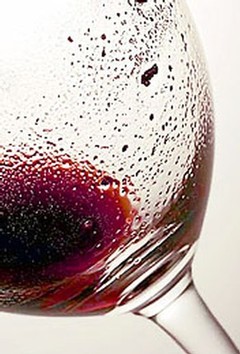Sediment in Wine
What’s this sediment in my wine?

This is a question I don’t mind answering as long as they are asking about someone else’s wine. Kidding aside, it is not usually a defect that causes this. There are two common sediments that annoy all but the seasoned wine drinker. That’s right, the wine drinker that understands wine will usually dismiss the following types of sediment.
The first type of sediment is the tartrate. Tartrate crystals form when wine is chilled below its tartrate saturation temperature. All wine has tartrate in it, so if you get it cold enough the wine may start to precipitate tartrate. A good winemaker will take steps to ensure that the temperature at which the precipitation occurs is at or below freezing. We usually do this by bringing the actual temperature of the wine down to just below 32 degrees for anywhere from a day to two weeks. This is a process called cold stabilization. This can be undone by blending wines after the cold stabilization process has been performed. Tartrate crystals can re-form in the bottle because blending can change the acid balance of the two wines which results in them becoming unstable. This is a mistake I’ve made myself and had to rebottle because of it. So, when you see these completely harmless crystals in the bottom of your nice bottle of white, don’t worry, you can still enjoy the wine. Just be a little careful not to pour too vigorously so that it gets into your glass.
The other type of sediment commonly found is a tannin sludge in red wine. This sediment is a kind of dark red sludge that you usually get in the last glass or two. This is actually considered quite normal for high tannin wines. As red wine ages, the tannins string together and eventually get heavy enough to precipitate out and settle to the bottom. This is another case where it is perfectly harmless. The biggest problem here is you usually don’t see it until you take that last sip and you get a mouth full of sediment. Even though I know it’s ok, I still find it repulsive.
Both of these issues can be compensated for by decanting the wine. Carefully pour the wine into a decanter before serving and no one will ever know. In fact, many red wines have a notable improvement in flavor due to decanting. So don’t stress over a little sediment in your wine. Just enjoy the wine the way it meant to be. Consume with abandon, (that last comment was inserted during editing – but I’m not pointing fingers – KayJ).
Until next week,
J.
